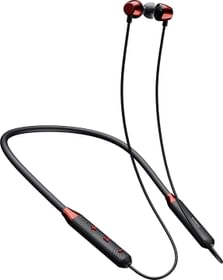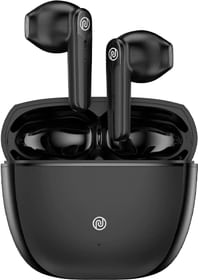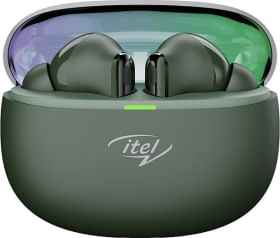The Government of India is reportedly considering implementing ATSC 3.0 technology on every smartphone sold in India. Also called ‘NextGen TV’, ATSC 3.0 technology would allow smartphones to receive live broadcasts of TV channels without needing wireless networks.
However, the move has faced strong resistance as many OEMs have come forward to oppose the government’s plan. It includes the likes of Qualcomm, Ericsson, Nokia, and Samsung according to whom, implementing ATSC 3.0 would require hardware raising the cost of each device to the end user and the various complications integrating phones with the technology impacting battery life among others.
The Indian Cellular and Electronics Association (ICEA) which comprises Vivo, Oppo, Xiaomi, and Samsung, have opposed the move as well. ICEA has criticized adopting ATSC 3.0 technology as it may hurt domestic manufacturing, and increase expenses on hardware, IPs, and software from PoV of device makers which will eventually trickle down to the end users.
The question is, what is ATSC 3.0 technology? How does it work and what are the potential benefits of adopting this feature? Well, if that’s what you are here for, read along to know the latest tech doing all the buzzing in the news.
What is ATSC 3.0 Technology?
ATSC stands for Advanced Television Systems Committee. It sets standards for TV broadcasting that nations around the world follow. It interprets how television signals from satellite, cable networks, or terrestrial will be broadcasted and interpreted by recipient devices. ATSC 3.0 is the latest standard that regulates digital signals replacing analog signals’ NTSC.
Also known as NextGen TV, ATSC 3.0 has the potential to stream any device and up to 4K resolution at 120fps. It supports both HDR and HLG content as well as Dolby AC-4 audio. ATSC 3.0 combines the use of over-the-air (OTA) and signals over internet protocol (IP). Imagine the standard as a super highway with a set of rules, regulations, and disciplines for car owners to follow.
How Does ATSC 3.0 Work?
India is not alien to satellite technology. Back in the day, televisions would stream channels and content using broadcasted signals received by antennas set up on the terrace that would intercept signals via satellite medium. Alternatively, users can get cable connections from service providers that would eventually set up larger antennas to connect to the satellites. This setup is cost-effective and requires minimal effort.
With the ATSC 3.0 in place, people will be able to intercept TV broadcast signals on their ATSC 3.0-enabled devices such as a smartphone. Here, the infrastructure requires setting up broadcast towers that would distribute signals much like cellular networks 4G, 5G, and so on. An ATSC 3.0-enabled device would pick their signals, decode them, and display content on the device from HD to potentially 4K resolution.
ATSC 3.0 antennas can be used across a host of devices including smartphones, and set-top boxes among others. It is where the Government of India comes into the picture as it is planning to make it mandatory for OEMs to integrate an ATSC 3.0 antenna on every smartphone sold in India to stream live TV. ATSC 3.0 won’t require any cellular network. It was demonstrated by the Mark ONE smartphone from ONE Media and Saankhya Labs where they stream live TV on the phone embedded with an ATSC 3.0 antenna.
You can simply call it ‘direct-to-phone live TV’ which hasn’t been seen anywhere yet. The live TV that we are accustomed to watching requires a cellular network and internet, however, ATSC 3.0 is different and you can check out the benefits to know why.
Benefits of ATSC 3.0
Unlike analog signals from NTSC, ATSC 3.0 technology uses digital signals with the capability to reach up to 4K resolution. ATSC 3.0 technology offers additional bandwidth to multiple streams on a concurrent basis. There’s lower latency on the table too especially when there are live sports telecasts involved.
Drawbacks of ATSC 3.0
But there are drawbacks too but they are often overshadowed by the benefits. For instance, ATSC 3.0 requires broadcasters to upgrade base stations and transmitters which is a huge investment upfront. The OTT era has spiked up mobile phone usage by a tonne with millions of users hooked to OTT platforms for their daily consumption. OTT has almost replaced TV and that’s why it complicates things for ATSC 3.0 as well.
Broadcasting 4K content on ATSC 3.0 for the users to watch is comparatively more difficult than OTT. It is also because there’s not much TV content available in 4K since most shows are shot in HD and there are not many followers willing to watch the content via ATSC 3.0 at 4K resolution which ends up being a chicken and egg problem.
Why Are Smartphone Brands Hesitant to Support ATSC 3.0 in India?
Even though India is one of the biggest smartphone markets, it is price-sensitive which means the pricing strategy can make or break sales. Adding ATSC 3.0 support to smartphones would’ve been a no brainer if it was a software implementation, however, it is a hardware upgrade. It means redesigning the phones to add antenna hardware adding another $30 (or INR 2,500) on top of the phone’s pricing.
Adding a $30 on top of the pricing is a sharp surge which may make potential buyers sceptical about their decisions. Additioning, it would take redesigning since the antenna would take up space, possibly raising production costs due to special design as well as potential compromises in terms of other components such as battery size.
The ATSC 3.0 infrastructure in India is underdeveloped which means broadcasters will have to invest heavily in setting up base stations and towers similar to 4G or 5G towers to allow live TV streaming. Moreover, internet users are breaking away from live TV and subscribing to OTT platforms which means the takers might not be much. These were some of the reasons why smartphone brands are hesitant to get ATSC 3.0 on their devices in India at the moment. The Indian government is yet to finalise the proposal so it would still take time before we get to see the verdict.
You can follow Smartprix on Twitter, Facebook, Instagram, and Google News. Visit smartprix.com for the most recent news, reviews, and tech guides.




































